6G-XR Impact Day: Paving the Way for the 6G Future of Immersive Services
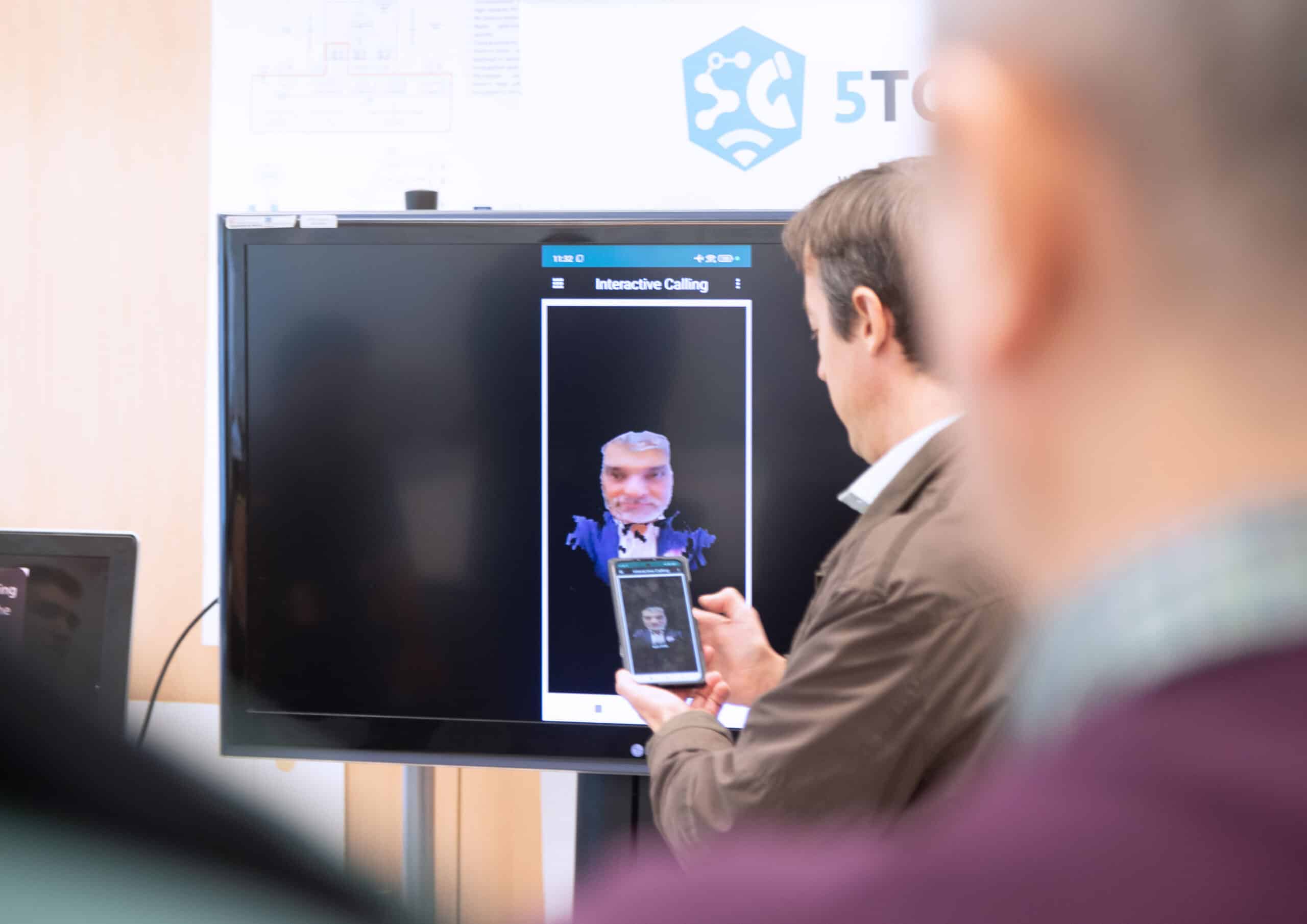
Leganés (Madrid), Spain — 28 October 2025
The 6G-XR Impact Day, held on 28 October 2025 at NEXTONIC (formerly 5TONIC) in Leganés, Madrid, brought together the project’s partners and external stakeholders from industry and academia for a full day of live demonstrations and cross-sector panel discussions showcasing the validation of 6G-XR’s key results. Over 60 participants observed how the project’s federated European testbed enables real-time holographic communication, distributed XR collaboration, edge-driven automation and energy-aware networking, capabilities that were demonstrated under realistic conditions across multiple sites. Alongside these demos, a cross-sector panel explored adoption pathways in manufacturing, media, energy, automotive and critical infrastructure, while a dedicated standardisation and data-governance panel assessed how 6G-XR’s validated capabilities align with emerging European regulatory and interoperability frameworks shaping 6G.
Celebrating achievements of the 6G-XR multisite testbed
Backed by the Smart Networks and Services Joint Undertaking (SNS JU) under the European Union’s Horizon Europe programme, the 6G-XR project has spent the past three years building a multisite testbed that extends across Finland (North node) and Spain (South node). This platform was at the centre of the event, demonstrating capabilities that move beyond proof-of-concept research.
The testbed supports real-time holographic communication, distributed XR collaboration, dynamic edge resource allocation, and energy-aware network optimization. Its unified architecture, a web-based trial controller for running end-to-end experiments, and two full holographic communication pipelines, including native IMS-based AR calling, one of the SNS JU programme’s top 10 accomplishments, have positioned the platform as a European reference.
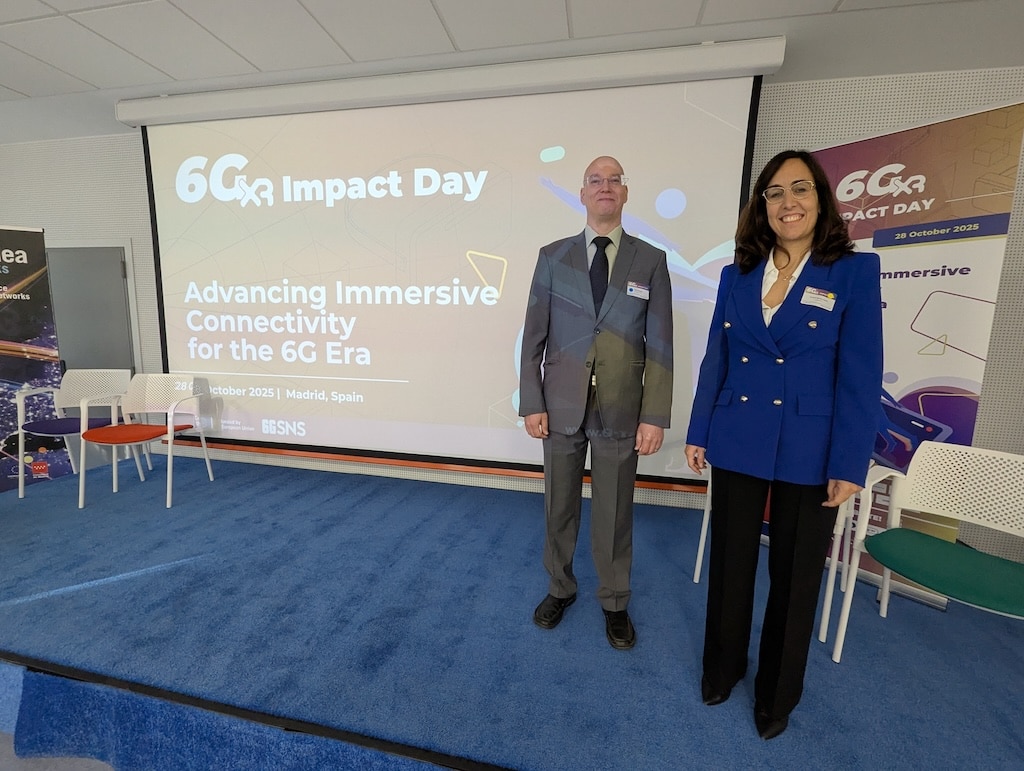
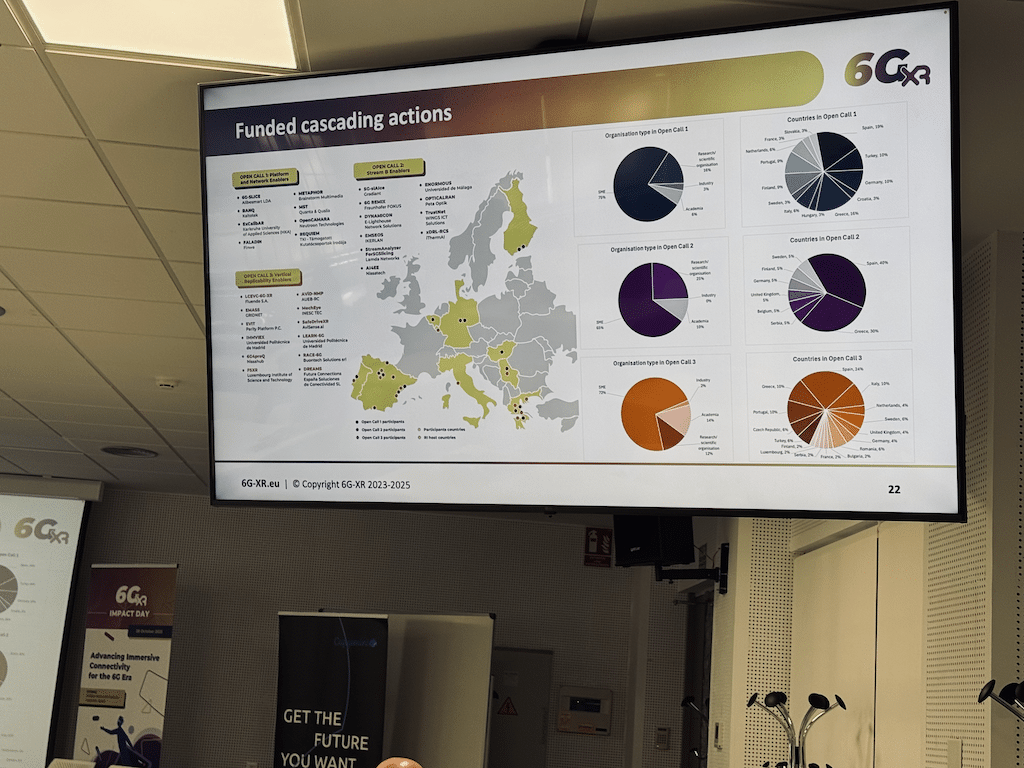
With 30 innovation projects onboarded through the project’s 3 Open Calls, the testbed has shown a level of maturity and usability that is increasingly aligns and converges with industry expectations.
“6G will not arrive as a single technological leap. It will emerge through the alignment of networks, computing, intelligence, and data governance into one interoperable continuum. Today’s demonstrations show that this foundation is real.” – Dr. Jussi Haapola, 6G-XR Project Coordinator, University of Oulu.
Cross-sector perspectives: interoperability as the decisive factor
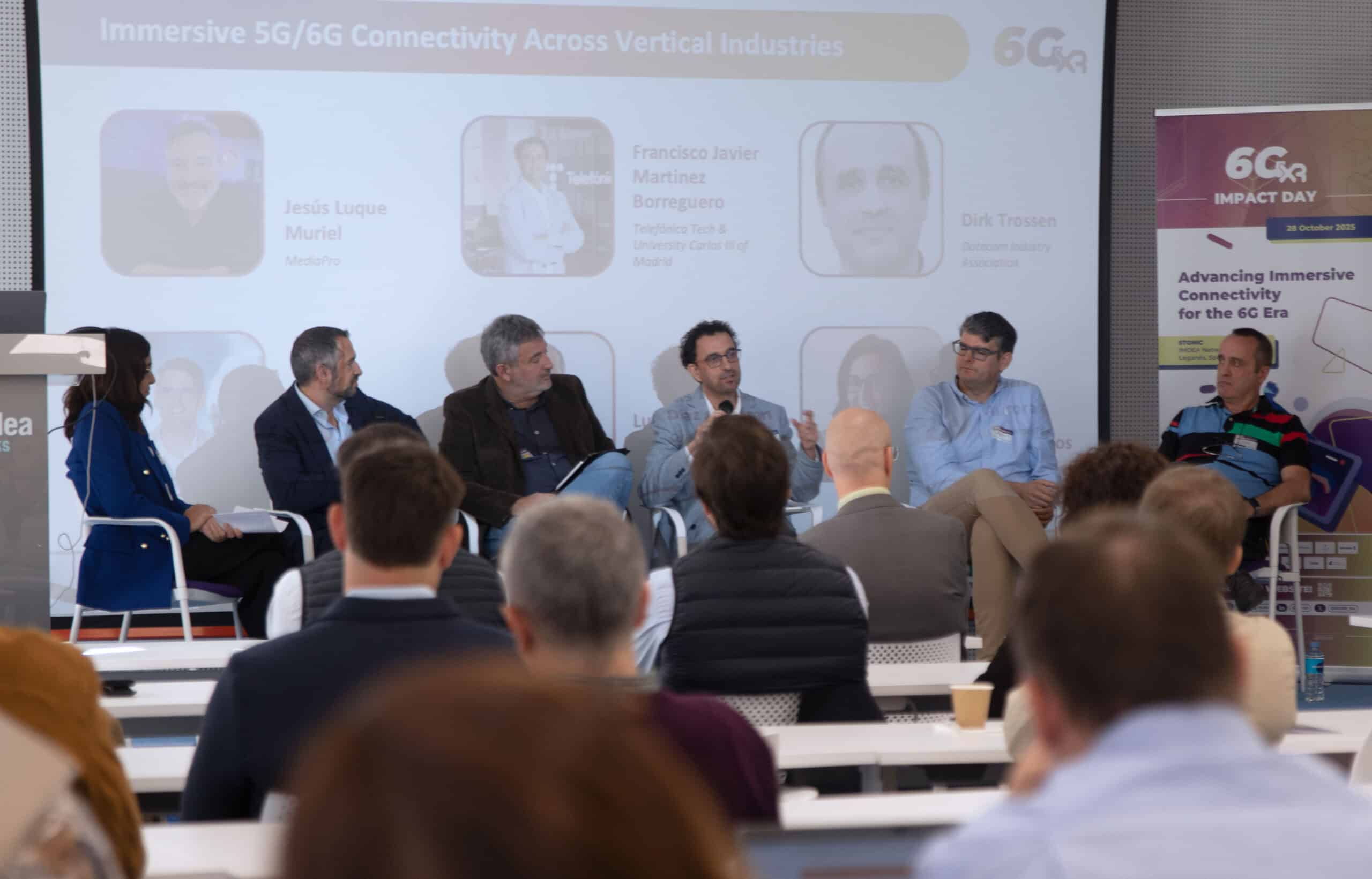
A panel moderated by Aurora Ramos (Capgemini Engineering) highlighted a recurring message: the technologies underpinning XR, AI, and edge-cloud integration have advanced significantly, but adoption depends on organizational readiness, shared architectures, and trust in data flows.
- Manufacturing and Industry 4.0 require XR and AI to integrate seamlessly and safely into established workflows (Francisco Javier Martínez Borreguero, Telefónica Tech).
- Energy and utilities need open data architectures that avoid vendor lock-in across multiple facilities (Luis Manuel Díaz de Téran, Capgemini Engineering).
- Media production is moving toward cloud-based pipelines but demands broadcast-grade reliability and continuity (Jesús Luque, MediaPro).
- Automotive manufacturing faces challenges tied to the quality and usability of captured data (Diego Mallada, Gestamp).
- Critical infrastructure sectors require strong guarantees around data locality, runtime compliance, and trusted federated deployments (Dirk Trossen, Datacom Industry Association).
Across domains, the message was consistent: interoperability, data governance, and operator-aligned workflows will determine whether immersive connectivity scales in real environments.
Demonstrations: testing the future under real conditions
The five demonstrations presented during the Impact Day were the event’s technical core. They provided concrete evidence of how distributed edge resources, intelligent orchestration, and immersive interfaces behave under real operating constraints.
Use case demonstrations:
- Congestion-Aware Holographic Communication (Use case 1)
Developed by i2CAT, Ericsson, Capgemini
A real-time holographic call that dynamically adapts to network congestion using AI-assisted rate control and QoS prioritization—showing how 6G-era traffic could remain stable under fluctuating conditions. - Automated Edge Selection for Multi-User XR (Use case 2)
Developed by i2CAT, Vicomtech, Capgemini, Ericsson
A scenario where the system automatically selects the optimal edge node for each XR user, reducing latency and enabling lightweight XR devices to operate smoothly in multi-user environments. - Native IMS-Based Holographic Calling (Use case 3)
Developed by MATSUKO, Telefónica, Ericsson
Holographic telepresence embedded directly into the phone dialer via IMS Data Channels, eliminating the need for external apps—an important milestone for mainstream adoption. - Co-Creative Digital Twin Cyber Studio over 5G O-RAN (Use case 4)
Developed by the University of Oulu
A collaborative 3D design environment connected to real fabrication equipment, demonstrating how XR interfaces and O-RAN infrastructure can support industrial digital twins. - Energy-Aware RAN and Application Optimization (Use case 5)
Developed by VTT
An AI-driven system aligning RAN behaviour and application-level quality with renewable energy availability, hinting at future “green intelligence” for sustainable 6G networks.
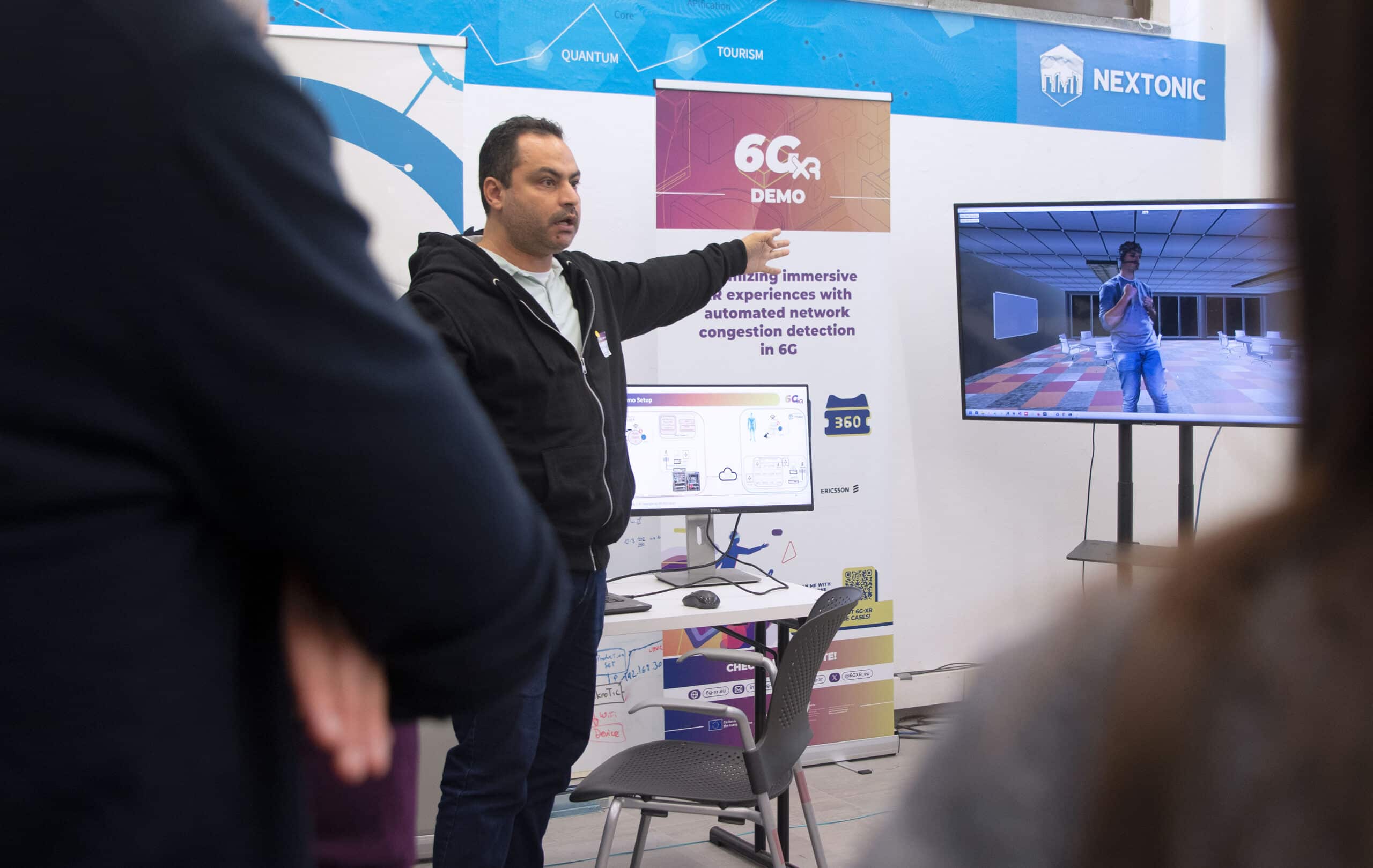
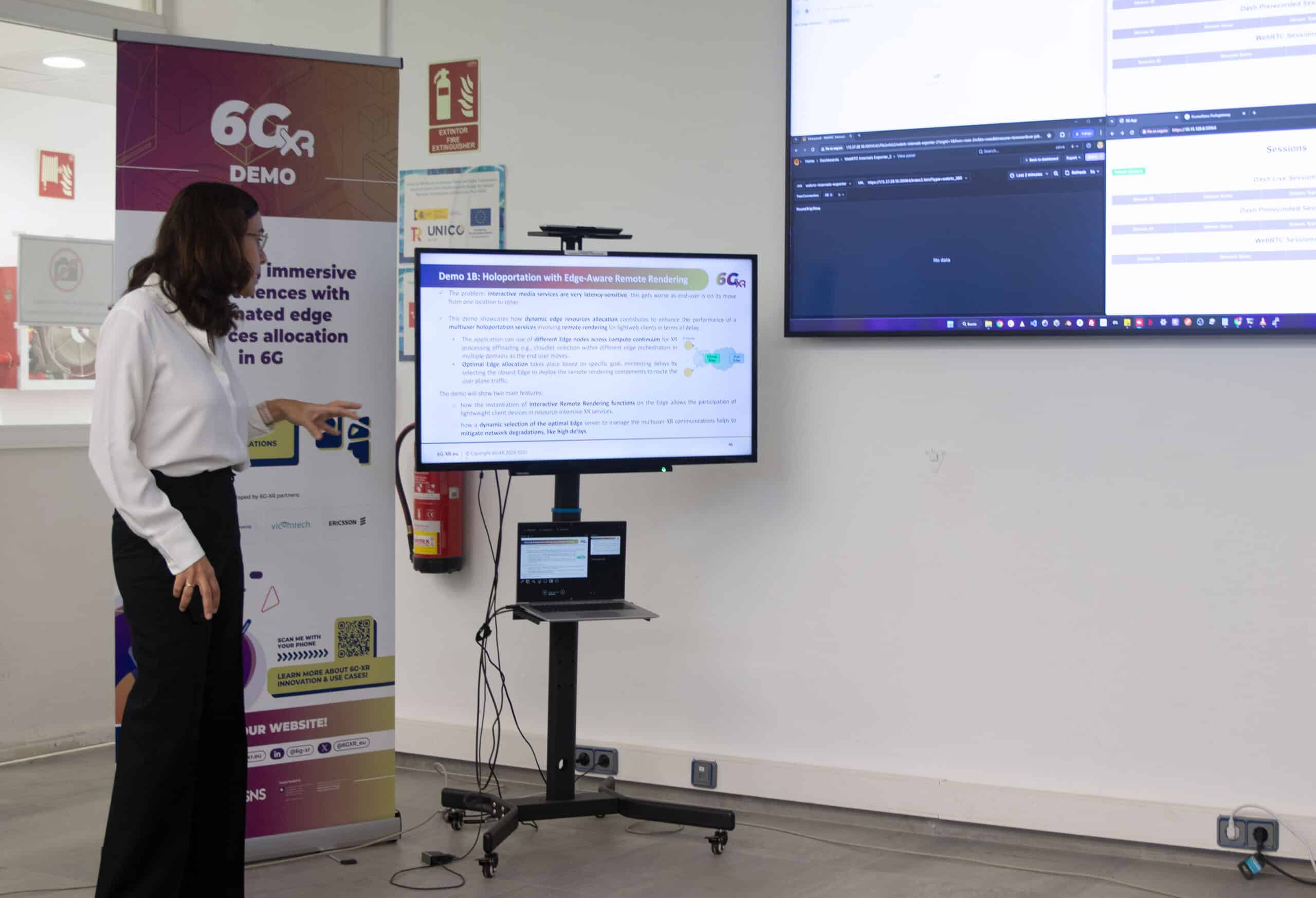
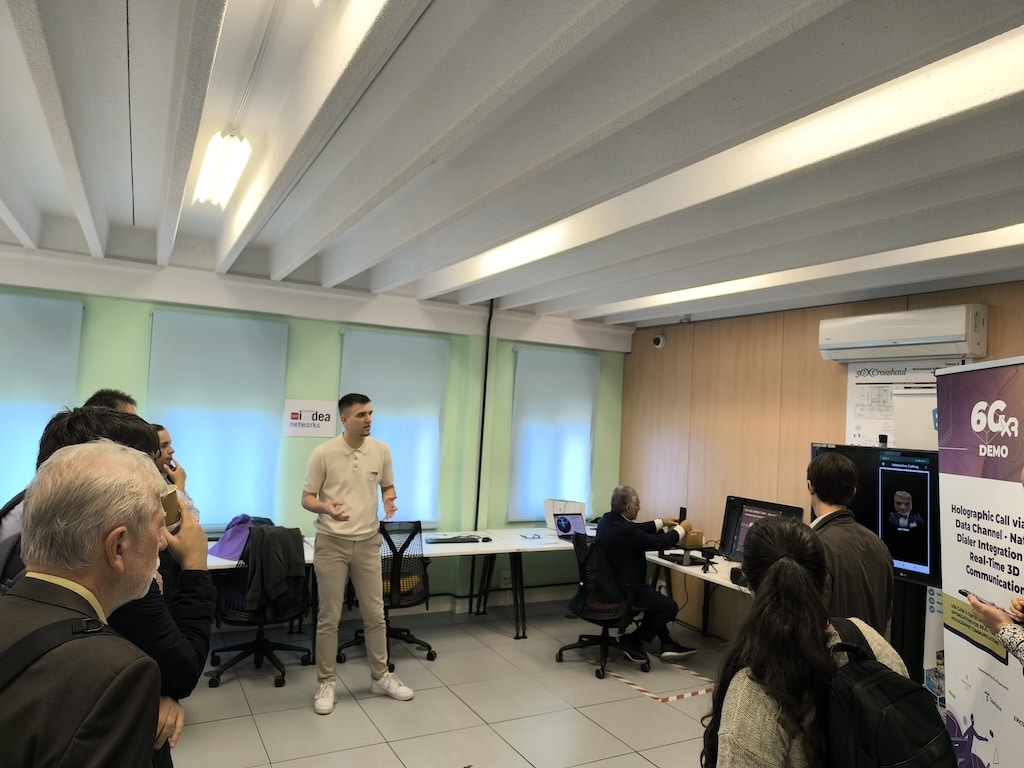
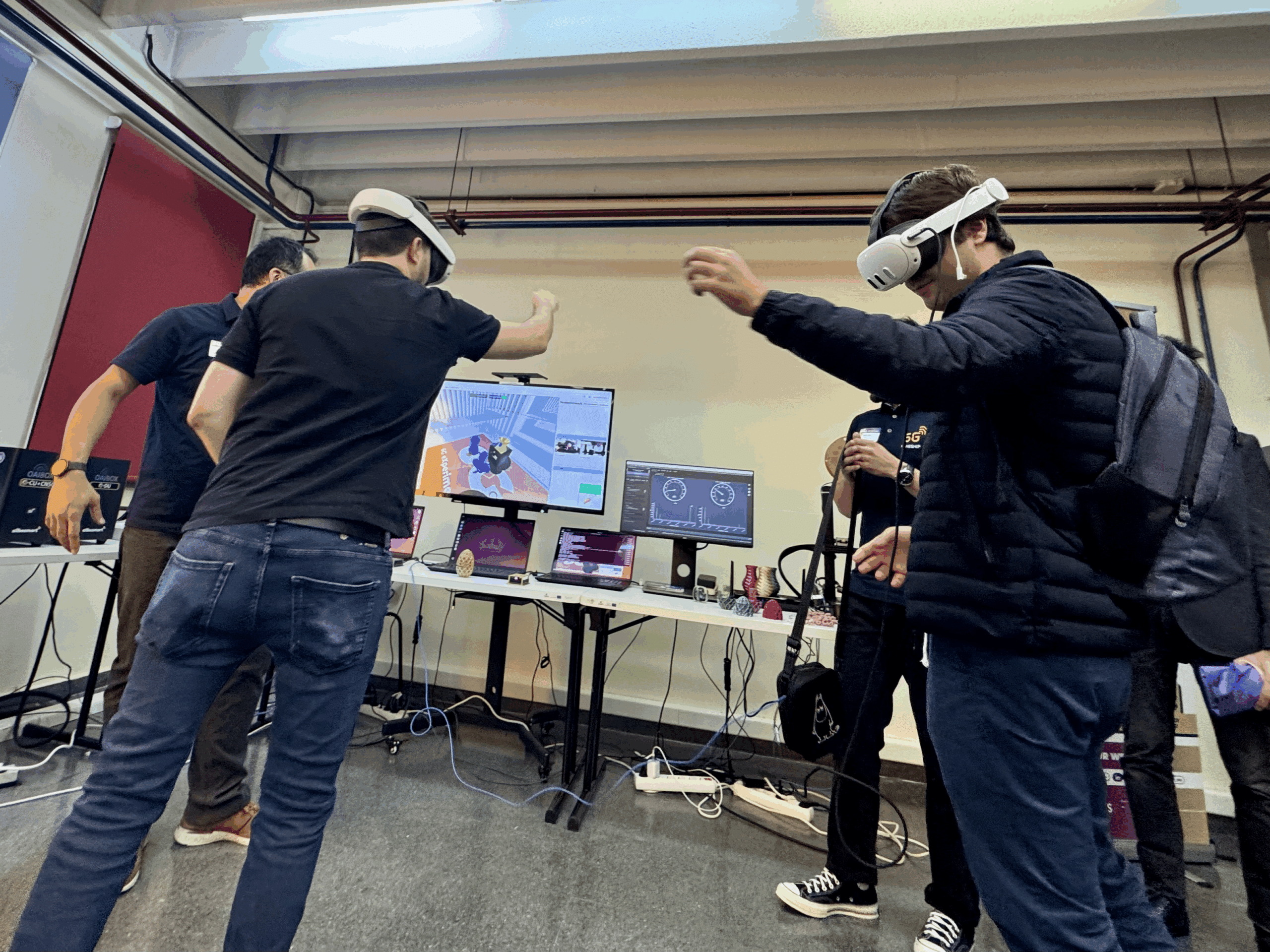
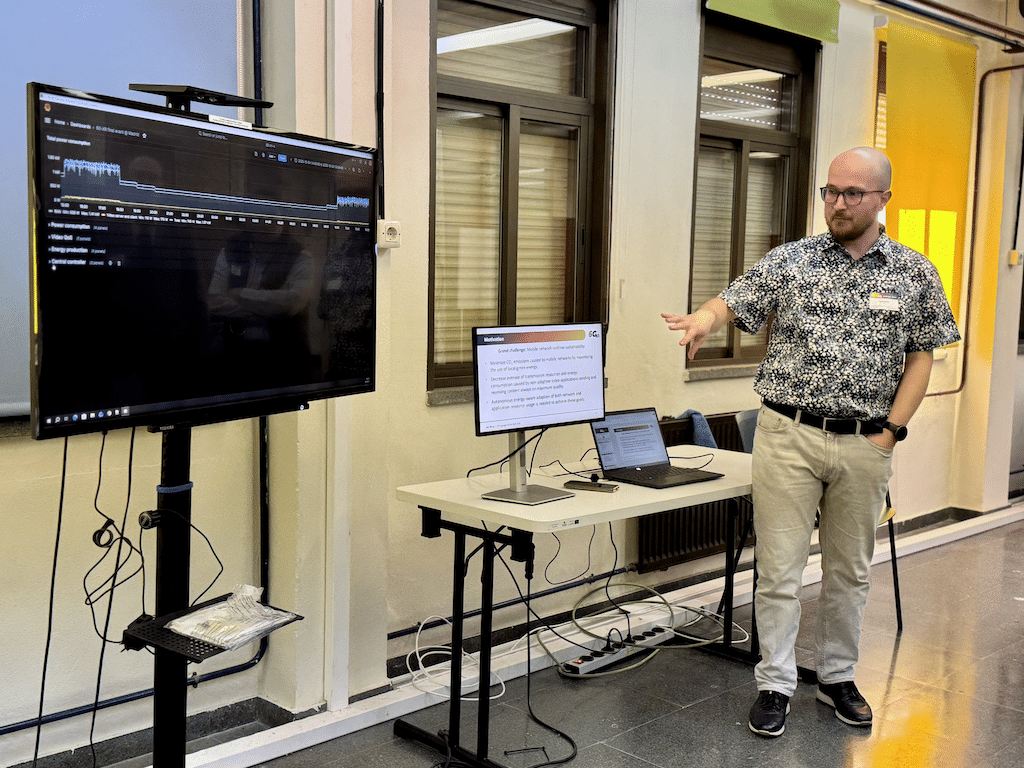
Collectively, these demonstrations validated the automation, interoperability, and cross-domain continuity needed for large-scale immersive services. They also showed how a coordinated computing–connectivity fabric can be operated across distributed sites—an essential step toward a European 6G infrastructure. Find out more details about the use cases and their demonstration walkthroughs in the 6G-XR Impact Brochure. Stay tuned for the demo videos of each use case!
Standards and governance: aligning technology with regulation
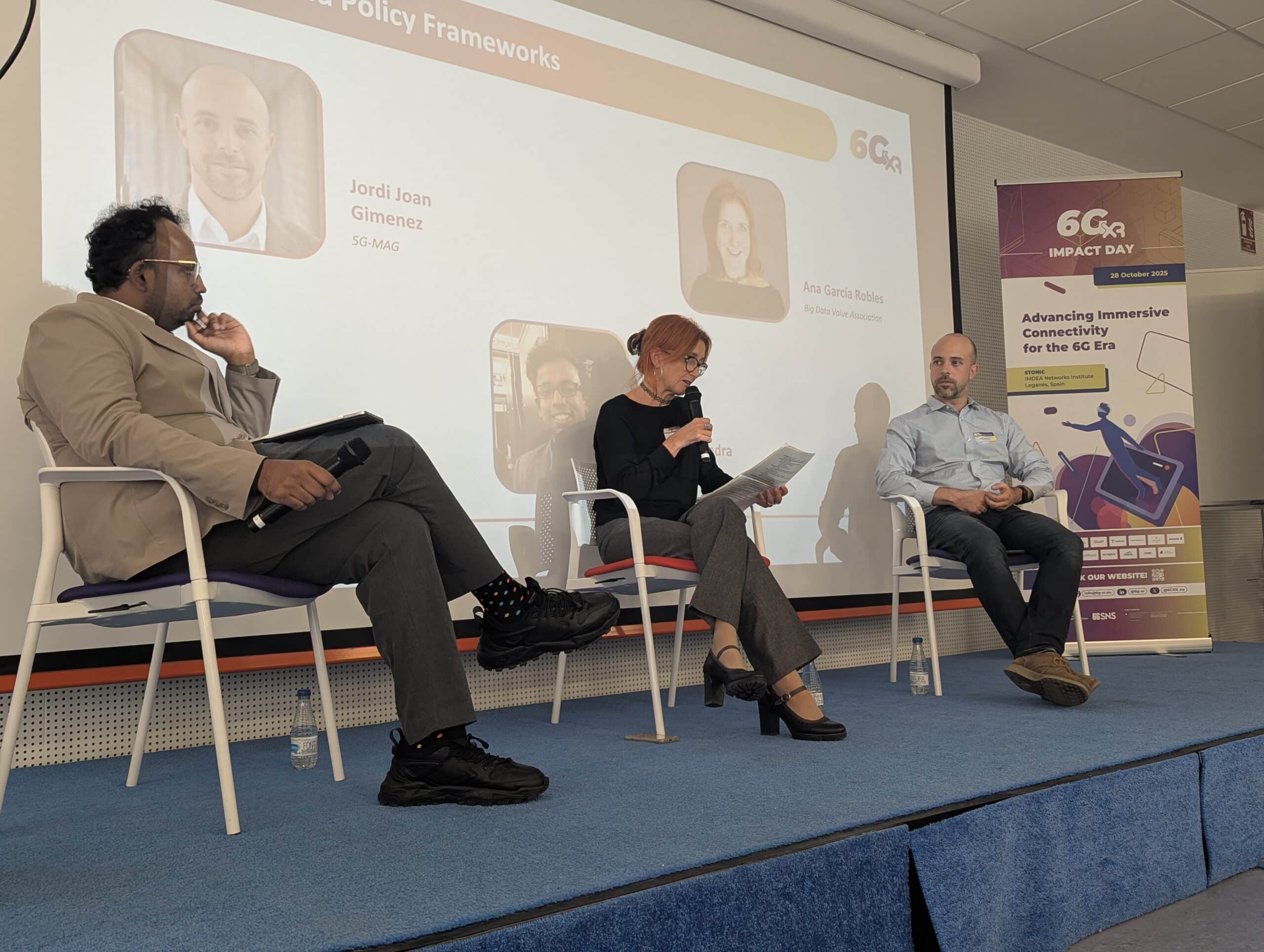
Ana García Robles (BDVA) and Jordi Joan Giménez (5G-MAG).
A second panel, moderated by Chathura Sarathchandra (InterDigital), explored how regulation and standardization must evolve alongside immersive services.
BDVA Secretary General Ana García Robles underlined that data provenance and traceability are no longer optional:
“Data provenance is not just compliance—it is the basis for trust and accountability across shared data ecosystems.”
For XR, telepresence, and immersive media, standards alone cannot guarantee interoperability. They must be coupled with open-source reference implementations.
“Standards must be driven by real use cases and deployed software. Interoperability happens when standards and open-source evolve together,” explained Jordi Joan Giménez (5G-MAG).
The discussion emphasized that Europe’s competitive advantage in 6G will depend on synchronizing architecture, regulation, and ecosystem development from the outset.
Looking ahead
The 6G-XR Impact Day showed how immersive connectivity, intelligent orchestration, and federated edge-cloud infrastructures are transitioning from research to deployment-ready reality. With the federated testbed continuing beyond the project’s lifetime, partners aim to support further experimentation, documentation, and replication across Europe.
As Dr. Haapola concluded:
“The innovations demonstrated here now move into open ecosystems, standardization efforts, and future deployment scenarios. This is how Europe builds technological sovereignty, competitiveness, and resilience in the 6G era.”
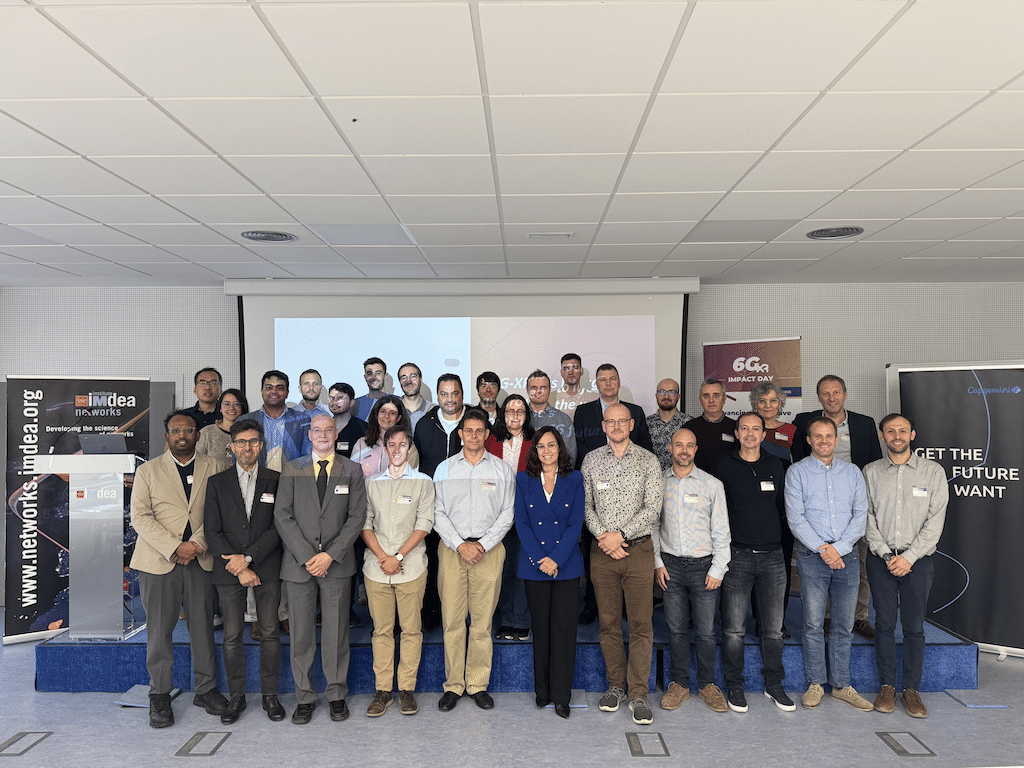
Click here to access the complete press release about the 6G-XR Impact Day:
